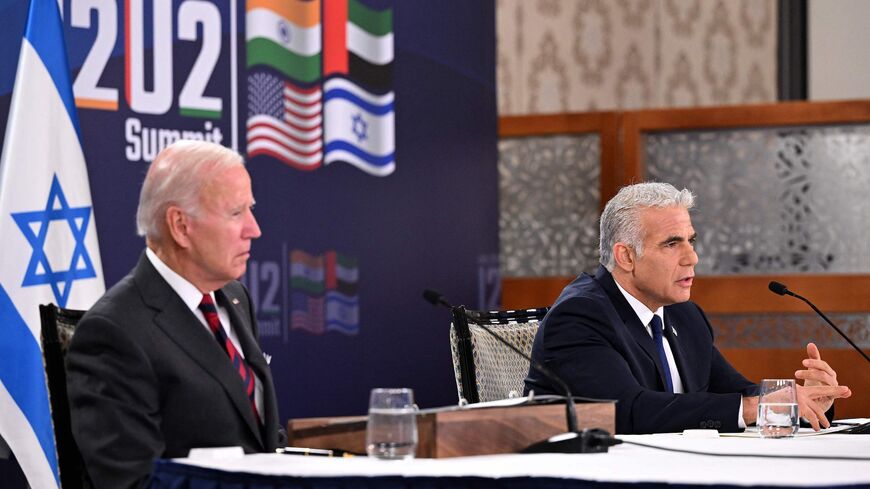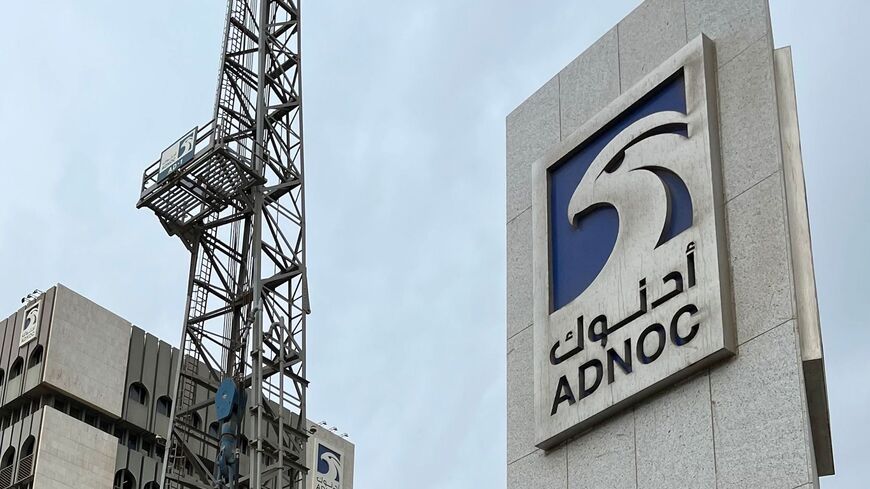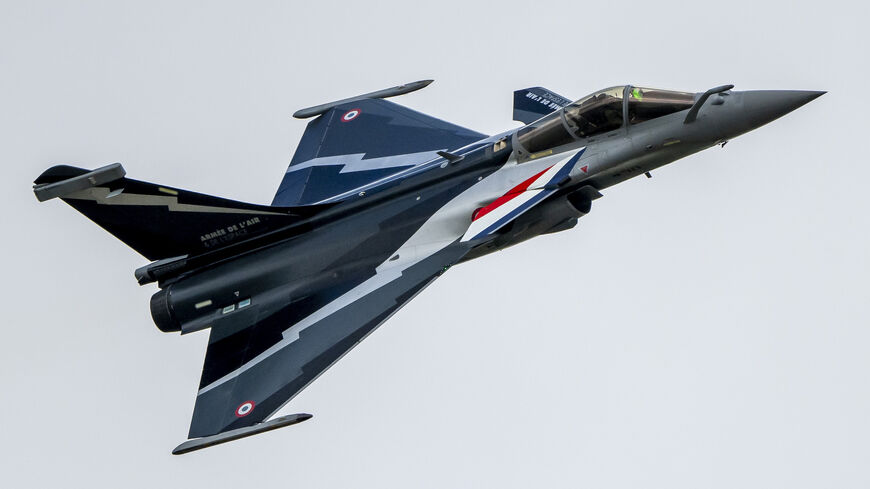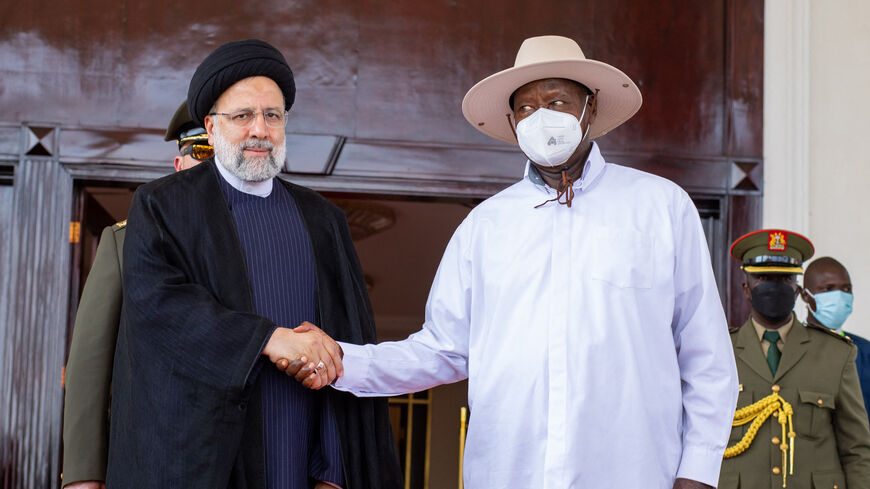American investment in Mideast to stay focused on larger economies amid Ukraine war
Al-Monitor Pro Members
Howard J. Shatz
Senior Economist, RAND Corporation
Sept. 27, 2022
China is often viewed as the economic powerhouse in the Middle East, but the United States has extensive trade, investment and financial links. However, in many cases, these links are highly concentrated in just a few of the 20 economies in the region.
Russia’s invasion of Ukraine is unlikely to change this, and many countries in the region may remain troubled economically and politically. However, the increase in oil prices, economic reforms in several economies and increases in regional cooperation stemming from the Abraham Accords could make selected markets more attractive. Accordingly, although dramatic shifts are unlikely, these changes could spur new increases in investment in both directions — from the United States to the Middle East, and from the Middle East to the United States — as well as increases in exports from the United States to the region.
- Economically, the Middle East has been shrinking in relative terms. Its share of global GDP peaked at 5.8% in 2013 but fell below 4.5% in 2020. Complete data for 2021 are not available, but this proportion is likely to rise in 2022 because of the energy price increase. The share of GDP is meaningful because trade is often proportional to GDP.
- In fact, US exports to the region are in line with this GDP share, with goods exports to the Middle East totaling 4.6% of global goods exports in 2020 and services exports totaling 4.3%. Back in 2013, the Middle East absorbed 6.1% of all US goods exports.
- In contrast, the US foreign direct investment position in the Middle East was only 1.6% of all US FDI, totaling $102 billion in 2021, reflecting the region’s limited role in global manufacturing, finance and insurance, and location for holding companies. FDI from the United States tends to go to economically advanced countries. For example, even though the EU27 accounted for 18% of global GDP in 2020, it hosted 30% of US direct investment.
- There has been a dramatic shift in the Middle East countries receiving US foreign direct investment. In 2011, Egypt hosted 24% of the total, followed by Israel at 14%, Qatar at 13%, Saudi Arabia at slightly less than 13%, and the UAE at 10%. By 2021, the Abraham Accords countries of Israel and the UAE hosted 40% and 16%, respectively, followed by Saudi Arabia at 12%, Egypt at 11%, and Qatar at 7%. The top five recipients accounted for 86% of US direct investment in the region in 2021, up from 74% in 2011.
- While oil and resources investments dominated in Saudi Arabia and the UAE, and manufacturing investments (particularly computers and electronic products) dominated in Israel, all three countries saw steep increases in investments in professional, scientific and technical services, and Israel and the UAE saw large increases in investments in the information industries. This suggests an increasing sophistication of these three economies.
- Goods exports to the region peaked at $98 billion in 2014 but registered only $74 billion in the COVID-19 recovery year of 2021.
- In contrast to the increasing concentration of US direct investment in the region, the distribution of goods exports has stayed remarkably stable — but still highly concentrated — with the UAE, Israel, Saudi Arabia and Turkey collectively receiving between 67.9% and 72.9% every year from 2011 to 2021. But among these countries, the two most notable trends were a share increase then decrease to Saudi Arabia (from 16.4% in 2011 to 21.8% in 2015 and finally 15.0% in 2021) and a share decrease then increase in Turkey (from 17.3% in 2011 to 10.5% in 2015 and finally 16.1% in 2021).
- The Middle East is neither an important source of imports nor an important source of direct investment for the United States. In 2020, the region accounted for only 1.0% of the total direct investment position in the United States, 2.2% of all US goods imports and 3.2% of all US services imports. (These numbers were similar in 2021, but the 2020 numbers are provided to compare to the Middle East share of global GDP).
- Leading direct investors in the United States are the UAE at 47% of the total from the Middle East, Israel at 25% and Saudi Arabia at 14%. The UAE has driven the rise in Middle East investment in the United States, but investment from the region remained below 1% of the global total in 2021 at 0.9%, albeit rising from 0.8% in 2011 and a low of 0.6% in 2015. Increased oil revenues are likely to drive more investment from the UAE and Saudi Arabia.
- The fracking revolution in the United States has had dramatic consequences for goods imports from the Middle East. Driven by reduced purchases of oil, goods imports from the Middle East have fallen from $128 billion in 2011 to $76 billion in 2021, with purchases of oil falling from $89 billion in 2011 to only $24 billion in 2021. At the same time, non-oil and gas imports rose from $37 billion in 2011 to $52 billion in 2021, driven by increases in imports from Turkey.
- US services exports, the type of international exchange most sensitive to COVID-19 lockdowns, have started to recover and in 2021 were above their 2014 level, hitting almost $33.6 billion, 4.2% of all US services exports.
- Financing of weapons sales appears to be a large component of US services exports. “Government goods and services,” the services category that includes the US foreign military sales program, which finances purchases of US weapons, was by far the largest services export category in 2021 at more than $9 billion, up almost 240% since 2011.
Scenario 1: With China making strong inroads into the region, US businesses may find themselves boxed out in terms of markets and investment opportunities. Furthermore, they may lose interest in the region the more they need to rely on the Chinese-origin information and telecommunications infrastructure being built there, which could open them up to data theft and industrial espionage. This decreased interest is unlikely to occur because the Middle East is once again a growing market due to energy revenues and Middle East countries want US involvement in their economies. Furthermore, Chinese telecommunications infrastructure is worldwide so that the Middle East does not present a very different operating environment.
Scenario 2: With the Biden administration announcing the strengthening of cooperation with Middle East partners, US businesses could increase their economic activity in the region. A greater US commitment could increase security of investment as well as greater market receptivity to US goods and services exports. Often, formal trade agreements spur greater investment because of the greater security and market access those agreements provide. However, in the case of the Middle East, there have been no new concrete steps between the United States and Middle Eastern countries in the realm of economics, so US commitments to cooperation are unlikely to affect economics.
Trade and investment depend heavily on economic and legal fundamentals — size of the market and laws and regulations related to investment and trade. Many Middle Eastern countries are either small markets or are faced with various forms of unrest, so they may be unlikely to attract greater US economic involvement than they currently have. The biggest changes in the region have been the Abraham Accords, specifically the economic environment they set for Israel and the UAE — and the rise in energy prices — enlarging certain markets and providing more money for investment. Accordingly, US economic involvement in the region is likely to stay focused on larger markets in line with economic growth, without dramatic shifts in location or magnitude.
Howard J. Shatz is a senior economist at the nonprofit, nonpartisan RAND Corporation and a professor of policy analysis at the Pardee RAND Graduate School. He specializes in international economics and national security and in international development. His research has covered China’s role in the developing world, technology development in China, great power competition in the Middle East and socioeconomic policy issues in several Middle Eastern countries.
We're glad you're interested in this memo.
Memos are one of several features available only to PRO Expert members. Become a member to read the full memos and get access to all exclusive PRO content.

Already a Member? Sign in
The Middle East's Best Newsletters
Join over 50,000 readers who access our journalists dedicated newsletters, covering the top political, security, business and tech issues across the region each week.
Delivered straight to your inbox.
Free
What's included:
Free newsletters available:
- The Takeaway & Week in Review
- Middle East Minute (AM)
- Daily Briefing (PM)
- Business & Tech Briefing
- Security Briefing
- Gulf Briefing
- Israel Briefing
- Palestine Briefing
- Turkey Briefing
- Iraq Briefing
Premium Membership
Join the Middle East's most notable experts for premium memos, trend reports, live video Q&A, and intimate in-person events, each detailing exclusive insights on business and geopolitical trends shaping the region.
$25.00 / month
billed annually
$31.00 / month
billed monthly
What's included:
Memos - premium analytical writing: actionable insights on markets and geopolitics.
Live Video Q&A - Hear from our top journalists and regional experts.
Special Events - Intimate in-person events with business & political VIPs.
Trend Reports - Deep dive analysis on market updates.
We also offer team plans. Please send an email to pro.support@al-monitor.com and we'll onboard your team.
Already a Member? Sign in






